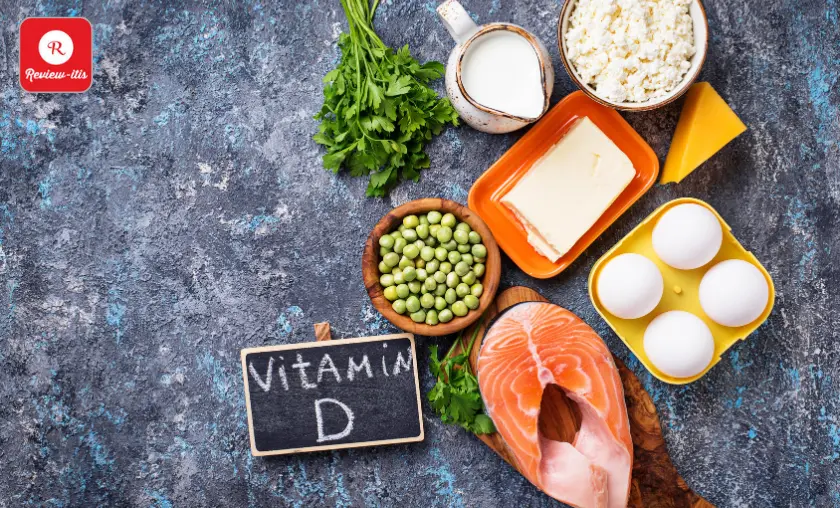During the winter months, our bodies often struggle to acquire sufficient vitamin D as a consequence of reduced exposure to sunlight. Insufficient levels of this essential nutrient can result in various undesirable effects, including fatigue, a general sense of unwellness, and even discomfort in the bones. Hence, it becomes imperative to prioritize adequate intake of Vitamin D in Winter during this season in order to maintain optimal health and well-being.
Table of Contents
If your goal is to preserve your fitness and overall wellness, consider increasing your consumption of vitamin D during the winter season.
Vitamin D in Winter, and Why Do I Need It?

Let’s talk about the incredible benefits of vitamin D, a remarkable fat-soluble vitamin that plays a pivotal role in maintaining the health of our precious teeth, bones, and muscles. This magnificent nutrient works its magic by meticulously regulating our bodies’ calcium and phosphate levels, ensuring they remain in harmony. However, during the winter season, when sunlight exposure becomes limited, there is a higher likelihood of experiencing lower levels of vitamin D, which can increase the risk of deficiency.
Let’s delve into the consequences of such a deficiency, my dear friend. Picture this:
- Feeling constantly fatigued
- Grappling with persistent aches and pains
- A general sense of not being quite well
These are just a few of the unwelcome side effects that can arise when our bodies lack sufficient vitamin D. But hold on tight because it doesn’t stop there. In more severe cases, vitamin D deficiency can lead to more pressing issues, such as bone pain and muscle weakness caused by a condition called osteomalacia.
To fully grasp the importance of maintaining adequate levels of this marvelous vitamin, we must understand its extensive impact on our overall well-being. So, my dear friend, let’s prioritize nurturing our bodies with an ample supply of vitamin D, particularly during the winter months when the chances of deficiency are heightened. Doing so ensures that our teeth remain strong, our bones stay resilient, and our muscles retain their vigor. It’s a small step toward a healthier, more vibrant life!
What Foods Contain Vitamin D?

You’ll find this extraordinary nutrient in oily fish, red meat, liver, egg yolks, and even fortified foods like luscious fat spreads and certain cereals. While these delectable options offer a means of obtaining vitamin D, it can still pose a challenge to acquire all the necessary levels solely from our meals.
Now, allow me to shed light on a group that requires particular attention when it comes to maintaining optimal vitamin D levels—our esteemed vegetarian and vegan friends. Their noble choice to forgo meat and eggs in their diets brings forth a unique challenge, as it exposes them to an increased risk of experiencing low vitamin D levels. Without these animal-based sources, it becomes even more crucial for our plant-based companions to find alternative ways to ensure sufficient vitamin D intake.
However, fear not, for there are solutions at hand. To bridge the vitamin D gap, our vegetarian and vegan friends can explore alternative sources such as fortified plant-based milks, fortified breakfast cereals, and mushrooms that have been exposed to ultraviolet light. These splendid options can contribute to meeting their vitamin D requirements and help safeguard their well-being.
Can I Get Vitamin D From Anywhere Else?

Indeed, our bodies have the remarkable ability to generate vitamin D when exposed to sunlight outdoors. During the summer months (April – September), we can typically obtain sufficient vitamin D from sunlight and our diet. However, in winter (October – March), limited sunlight due to shorter, darker days increases the risk of low vitamin D levels and potential deficiency.
Should I Be Taking a Supplement?

Startling findings from a recent study revealed that up to 20% of adults and children suffer from low vitamin D levels. To address this concern, Public Health England (PHE) now recommends a daily intake of 10 micrograms of vitamin D for adults and children over the age of one. Since acquiring sufficient vitamin D solely from food can be challenging, taking a supplement during winter becomes crucial. Moreover, certain groups, including [list groups], are advised to take a supplement consistently throughout the year.
- Children aged 1-4.
- People with dark skin (from African, Afro-Caribbean, and South Asian backgrounds).
- People with limited sunlight exposure (those in care homes or who cover their skin outside).
Where Can I Get Vitamin D Supplements From?

Did you know that vitamin D supplements are conveniently available at most supermarkets and pharmacies? It’s true! They provide a practical option for ensuring adequate vitamin D levels. Furthermore, an intriguing recent study suggests a possible connection between obesity and lower vitamin D levels. While this finding requires further confirmation, the underlying message remains unchanged: maintaining a healthy weight is beneficial for our physical well-being and mental health.
Now, let’s talk about our approach to nutrition. Generally, we are encouraged to obtain all our essential nutrients from our wholesome foods rather than relying solely on supplements. However, there is an exception to this rule regarding vitamin D. Why, you might wonder? WCertaingroups face an increased risk of vitamin D deficiency, making it worthwhile to consider incorporating a vitamin D supplement into their routine.
It’s important to prioritize our overall health and recognize the significance of maintaining optimal vitamin D levels. While sunlight and dietary sources offer natural means of obtaining vitamin D, these may only sometimes be sufficient, particularly during seasons with limited sunlight or for individuals with limited sun exposure. Taking a vitamin D supplement can help bridge the gap and support your body’s needs.
Conclusion
The winter season presents unique challenges when it comes to maintaining sufficient vitamin D levels. While our bodies can produce this essential nutrient through sunlight exposure, the shorter days and limited sunlight in winter make it more difficult to meet our requirements naturally. In such circumstances, the question arises:
Are supplements necessary? The answer, backed by expert guidance and research, points to the importance of considering vitamin D supplements as a valuable tool to support our well-being during winter. By being proactive and mindful of our vitamin D intake, we can ensure that our bodies receive the nourishment they need, helping to safeguard our health and vitality throughout the chilly season and beyond.
FAQs
Why is Vitamin D Important for Our Health?
Vitamin D plays a crucial role in maintaining strong bones, as it helps regulate the absorption of calcium and phosphorus. It also supports proper immune function, aids in muscle function, and contributes to overall well-being.
Sufficient vitamin D levels have been linked to reduced risk of certain diseases, including osteoporosis, cardiovascular disease, and certain types of cancers.
How Do Our Bodies Produce Vitamin D?
Our bodies have the remarkable ability to produce vitamin D when our skin is exposed to sunlight. Specifically, when ultraviolet B (UVB) rays from sunlight interact with a form of cholesterol in our skin, a series of chemical reactions occur, producing vitamin D3.
This synthesized form is then converted into its active form, known as calcitriol, through processes that take place in the liver and kidneys.
Why is Vitamin D Deficiency More Common in Winter?
In winter, when the days are shorter and darker, our exposure to sunlight decreases significantly. Since sunlight is the primary source of vitamin D, this reduced exposure can lead to lower vitamin D levels in our bodies.
Moreover, in regions with higher latitudes, the angle of the sun is lower during winter months, further reducing the intensity of UVB rays required for vitamin D synthesis.
Can We Get Enough Vitamin D From Food Alone?
While certain foods contain small amounts of vitamin D, obtaining sufficient levels through diet alone can be challenging, especially in winter. Natural dietary sources of vitamin D include fatty fish (such as salmon and mackerel), egg yolks, liver, and fortified foods like milk, cereals, and some dairy products.
However, consistently consuming enough of these foods to meet our vitamin D needs can be challenging.
Who is at a Higher Risk of Vitamin D Deficiency?
Certain individuals are more prone to vitamin D deficiency, including those who have limited sunlight exposure (due to factors like working indoors, covering the skin for cultural or religious reasons, or residing in regions with low sunlight intensity), individuals with darker skin tones, older adults, people with digestive disorders affecting nutrient absorption, and those who follow a strict vegetarian or vegan diet.
To read more similar articles, click here.
Thanks for visiting our Website. If you appreciate our work, kindly show us some support in our comments section 🙂